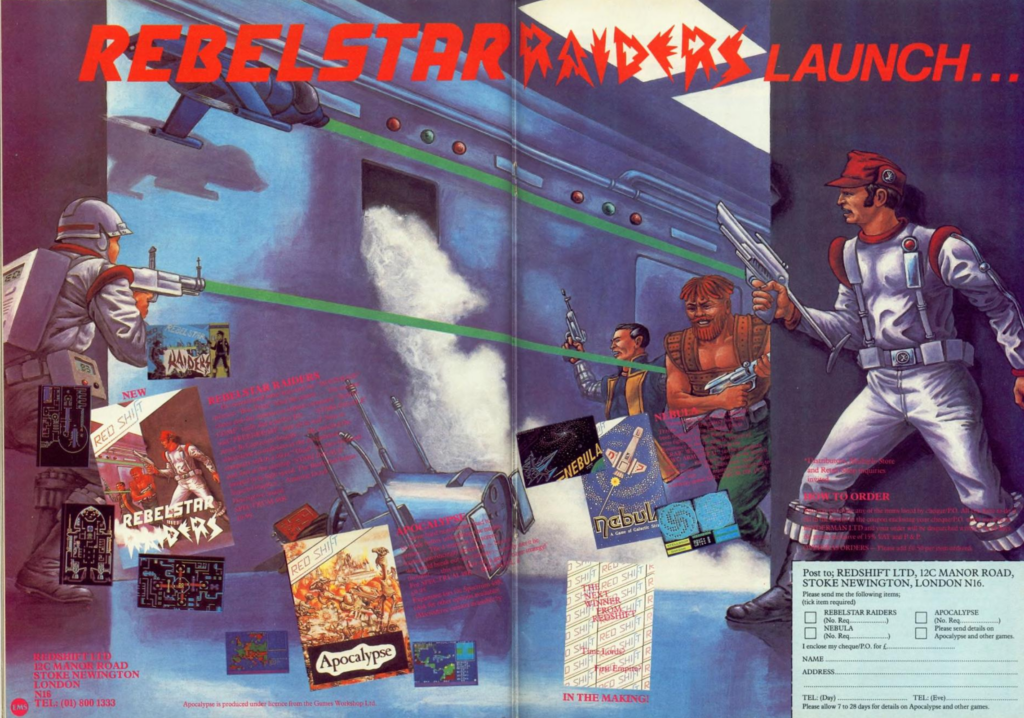
Rebelstar Raiders by Julian Gollop, published by Red Shift, UK
First release : February 1984 on ZX Spectrum
AARs : Moonbase, Starlingale, The Final Assault
Average duration of a campaign : 1 – 2 hours depending on the scenario
Total time played : Around 8 hours
Complexity: Low (1/5)
Final Rating: Three stars
Ranking at the time of review: 12/125
We last left Julian Gollop after the release of Islandia, which coincided with the end of Red Shift, so we need to backtrack a bit. The timeline is unclear, but if I trust the paper trail left by the ads, Gollop started working on Rebelstar Raiders shortly before or after Nebula and before he worked on Islandia. He was then on a study sabbatical and (probably) on Red Shift’s payroll. Gollop claims to have been inspired by two games: SPI’s Sniper! (1973) and Game Designers’ Workshop (GDW)’s Snapshop (1979). Most sources insist on Sniper!, a classic design by Jim Dunningan and the first tactical squad combat board game. Sniper! had evidently more than inspired SSI’s Computer Ambush, a fact that I was not aware of when writing the review of the latter because back then I did not deep-dive into the history of the games. However, checking Sniper!‘s ruleset, there is very little from it that made it into Rebelstar Raiders. Such a complex game (vehicles! change of weapons! morale & panic! opportunity fire! facing! posture! smoke! 3D line-of-sights!) may have been more aspirational for Gollop, and to a large extent the Gollop’s increasingly more complex tactical games up until X-COM may be seen as striving to replicate Sniper! as closely as possible, with aliens. In 1984 however, there is still a long way to go before reaching Sniper!‘s level of details.
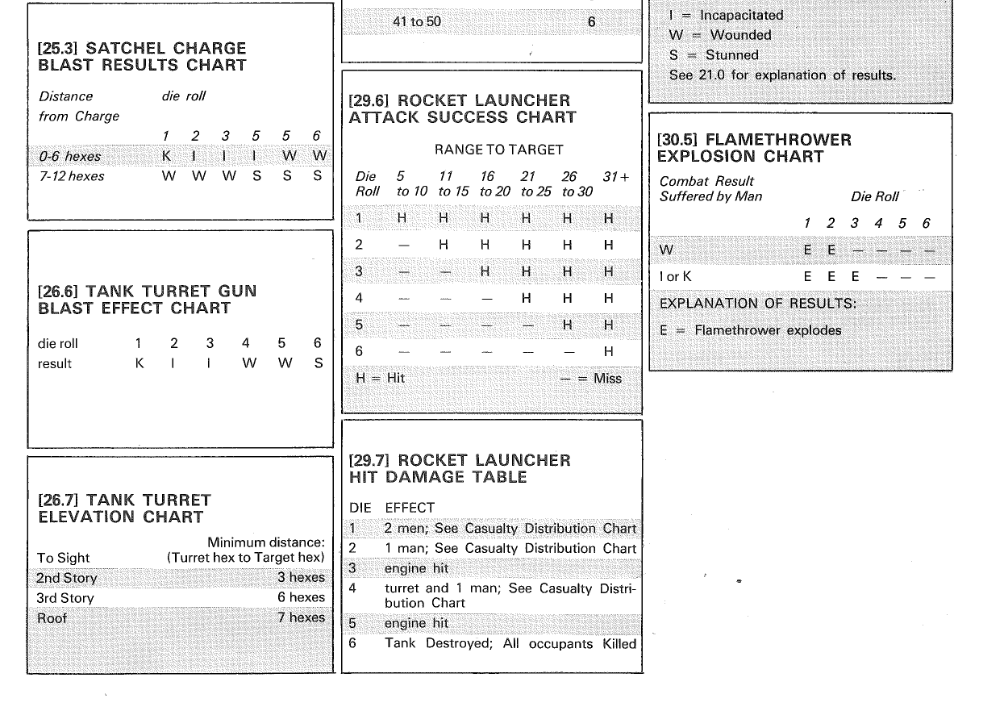
For the moment, given his modest computing skill and the limited capacities of the ZX Spectrum, Gollop was content to base Rebelstar Raiders on a smaller and less prestigious game: GDW’s Snapshot, the game of “close combat aboard starships in the far future.” In particular, Gollop had been impressed by Snapshot‘s concept of flexible action points, with the “shooting” action taking a different number of APs depending on the weapon and on whether the shot was “aimed” or “snap”. Snapshot also included a nice little rule that Sniper! did not: wall breaches by the most powerful weapons (with special rules if said wall happened to be the external wall of the starship). Gollop must have loved that part!
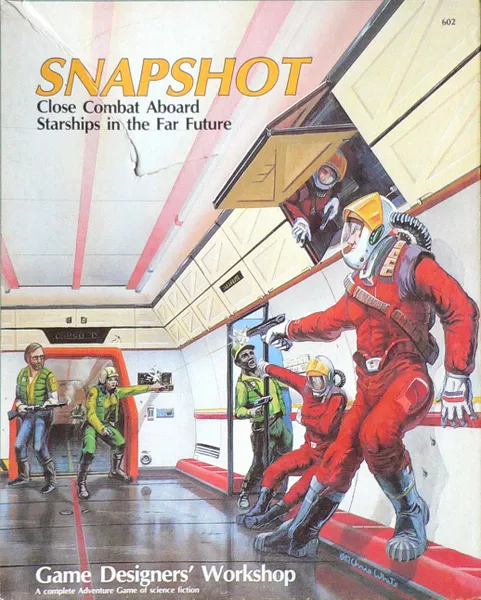
As Gollop recalls in Monsters in the Dark: The Making of XCOM UFO Defence, development was quick: “Those days were quick, fun, and exciting. You felt powerful because you could create these games relatively easily and get fun and enjoyment out of them pretty quickly”. According to the same source, the first prototype already had three scenarios, but no thematic unity: “One was set in World War II. Another took place in a sci-fi installation, and the third was modelled after a medieval fortress.” Gollop brought the prototype to his Red Shift friends, who saw the immense potential of the game but convinced him to tie the three scenarios with only one theme and an engaging scenario – I suppose the science fiction theme was chosen because it allowed to create human-size units behaving as armoured vehicles. Rebelstar Raiders was ready, and released with much ad fanfare around February 1984.
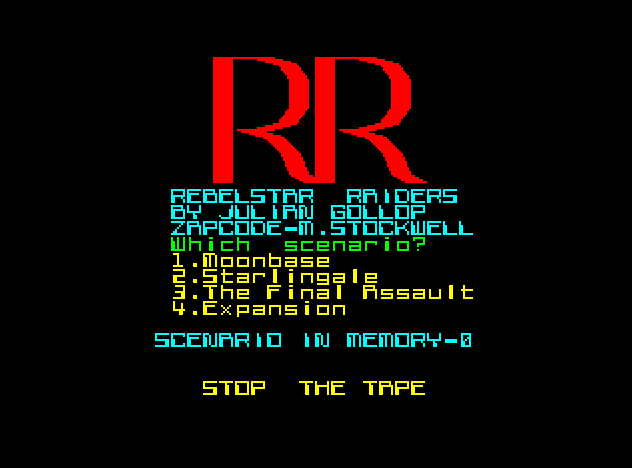
The folks at Red Shift, most of them wargaming veterans, knew how to recognize a banger when they saw one. Red Shift’s cash cow in 1983 was Apocalypse, a multiplayer-only game based on a Game Workshop licence that proved so successful that Red Shift did something seldom seen so early in video game history: they released three scenario packs in late 1983. Rebelstar Raiders had similar potential, hence the addition of an option to load an “expansion” disk from the Main Menu.
As expected, the game was a critical and commercial success, and Gollop recalled that it became the most profitable Red Shift game at that point – Apocalypse started then to reach the end of its shelf-life, and while it is possible that it still sold more, there was also a significant Game Workshop cut. I already explained what happened next. Gollop did not profit from Rebelstar Raiders and Nebula’s successes, as he had negotiated a fixed salary rather than royalties. He was not alone in this situation; financier Stanley Gee had fronted the cash necessary to launch Red Shift, and he considered that the revenue coming from its games was his. Gollop did not need the cash right then, but some of the other founders had been toeing the poverty line their whole life. In the ensuing confrontation, Gee misjudged the strength of his position – in 1984, the industry had no entry nor exit barriers – and the other founders simply left to found SLUG, taking with them their experience, their work-in-progress and the Game Workshop relationship. Gee was left at the head of an empty shell. Despite a mention in Micro Adventurer (November 1984) that Julian Gollop “now with SLUG“, had written a scenario editor and two additional scenarios for Rebelstar Raiders, no expansion disk was ever released. As for Gee, he tried to recruit a new team to release a bizarre adventure/survival game called The Tripods in early 1985, but it was a failure and Red Shift disappeared shortly thereafter.
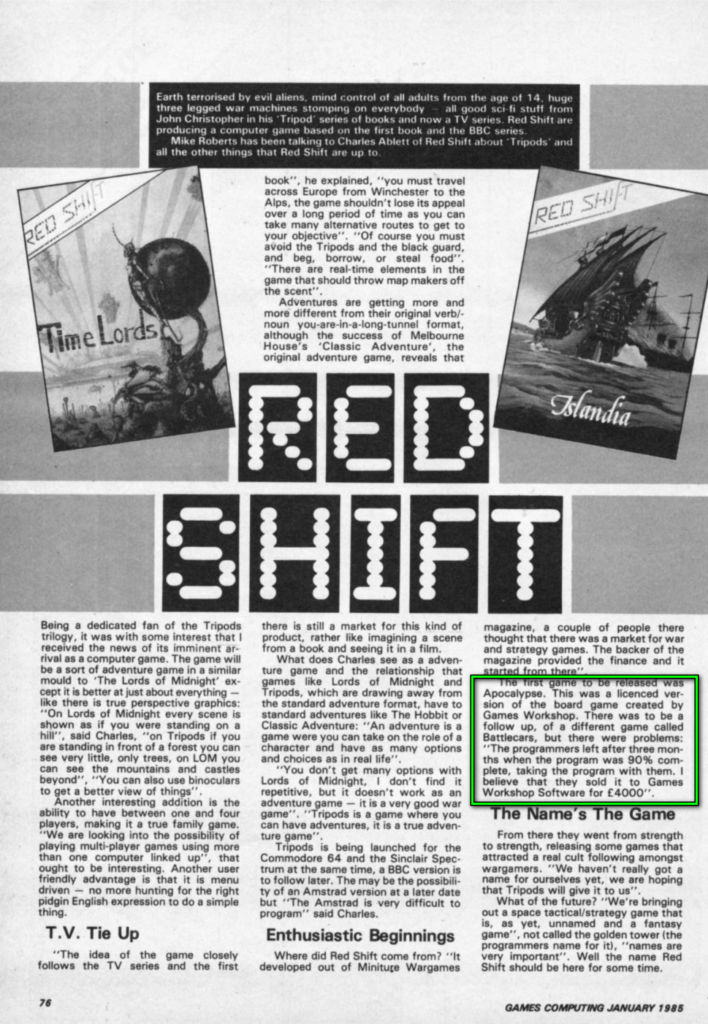
A. Presentation
Adequate. The visuals are not outstanding, but they do their job and they are never a strain on the eye. Seeing the trajectory of shots never gets old.
The game comes with a short narrative context. It is derivative, but competently written and strong enough to give the battles a high-stake vibe.
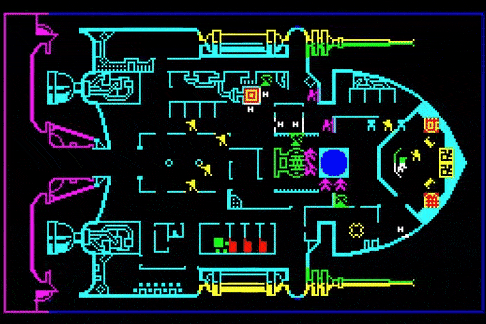
Every non-robot character has a real name, often based on Red Shift staff, whether their real names or their usual nickname): Woof (Helmut Watson), Captain Deno (probably Julian Fuller), Joe Capricorn (apparently a real name), Eric the Digit (also credited as the artist for the manual),… Amusingly, Julian Gollop (“The Kid Strange” in the credits) is possibly the only key Red Shift employee not having his alias in the roster. Every non-robot character also has its own individual stats, with some characters particularly slow (MP=8)… or fast (MP=15), sturdy (HP= 16)… or weak (HP = 2 in one case that may be an input issue). It adds a lot to the game.
B. UI, Clarity of rules and outcomes
Good. The game can be almost fully played on one screen, with only the stats of the characters and their weapon “hidden” one query away (but then still displayed on the screen).
I have a few minor gripes, but the three worst ones are:
- There is no confirmation menu of any sort if you forget to type the “stop shooting” command before selecting another character, and your rebels will loyally laser blast their buddies if you make that mistake,
- Wall destruction feels random. Some walls won’t be destroyed except if the grenade arrives through a specific angle, for no discernible reason. It can also be hard to know on which tile a wall is, with drastic consequences:
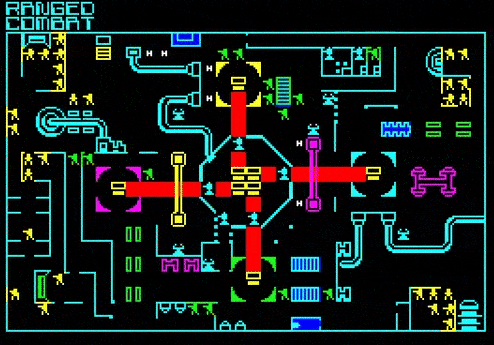
- A more significant issue is that characters always aim for the centre of the target, even if said centre is well-protected. This means that to hit an opponent mostly behind cover, players have to do unintuitive “trick shots”: aiming at an empty location so the bullet travels through the exposed parts of an enemy character (or robot). It is easy to misjudge these, and I would prefer a system where you could aim for a specific pixel directly.
C. Systems:
Very good. The system is streamlined, yet deep:
- Each character/robot has Movement Points (MPs) used freely before, between or after shots. Moving horizontally costs 2 MPs in open terrain, moving diagonally costs 3 MPs,
- Shooting costs a percentage of starting Movement Points, depending on the weapon (a pistol is faster to shoot than a laser rifle). Accuracy mostly depends on the weapon (with a marginal impact coming from the character’s “skill”). If a character does not have the required Movement Points to shoot, they can still shoot an inaccurate “snapshop” that will end their turn.
- If something is hit (initial target or not – any pixel will do), then it will receive “base” damage equal to between once and twice the weapon damage value,
- Armour, if any, reduces this damage by between once and twice the armour value – at least that’s what I understand.
- Range decreases damage every 5 straight tiles, by an amount which depends on the weapon. Given the range of engagement, the difference in damage is only going to be impactful on weak weapons (the laser rifle again) or when shooting at heavily armoured robots
This works incredibly well. For all weapons except the shoddy laser rifle and the underpowered pistol, two hits are going to bring down any human. This often forces the player to choose between “one more shot” to finish a target/neutralize a new one, or returning to cover. That was an agonizing decision every time.
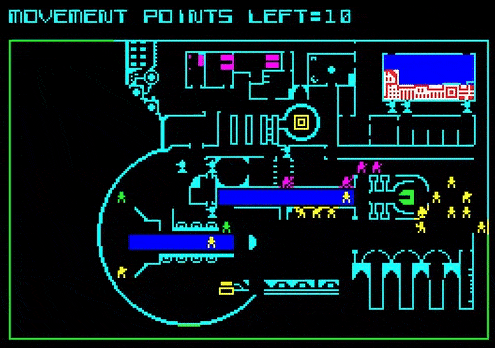
D. Scenario design & balancing:
Very poor. I can’t rate very highly a game without AI in this category, and while I appreciate having 3 scenarios, they are extremely unbalanced. This is fine when you discover the game, but as players become better I don’t see any defending player winning any scenario – or at least not without a massive injection of house rules.
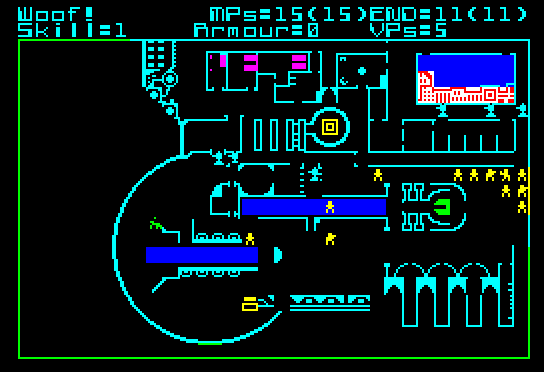
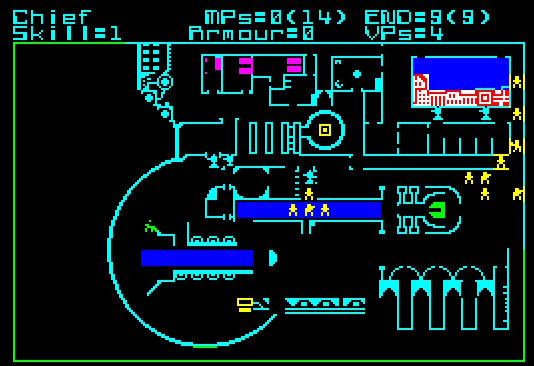
E. Did I make interesting decisions?
Every. Single. Turn, for (almost) every single unit. Advancing one more square can make the difference between hitting and missing… and between killed by return fire or protected by cover. Rebelstar Raiders is not only about being smart about how to move individual soldiers: the size of the map and the amount of units available means you also need to think about a global “resource allocation”, particularly in the first and last maps of the game. I don’t remember there was much of this in Galactic Gladiators and Computer Ambush.
F. Final rating:
Three stars. Rebelstar Raiders is hard to rate in my system – I played the immense majority of the games on this blog in solitaire, something that Rebelstar Raiders does not allow. I had a lot of fun with it, but what part of that fun is intrinsic to the multiplayer experience?
Compounding this issue, I tried to compare Rebelstar Raiders to my favourite tactical game so far: Galactic Gladiators. Galactic Gladiators felt more complete and better than Rebelstar Raiders in everything except the core experience, in which it felt equal. Yet, Rebelstar Raiders felt better than games I had ranked above Galactic Gladiators, because the latter had a mediocre solitaire mode which is the one I rated the game on, even though I had also played Galactic Gladiators in multiplayer and loved every part of this, even more so than Rebelstar Raiders. My solution was therefore to upgrade Galactic Gladiators to three-stars based on the fact that it is a multiplayer game first and foremost and that it is great at that, and then slide Rebelstar Raiders at three stars, but below the former.
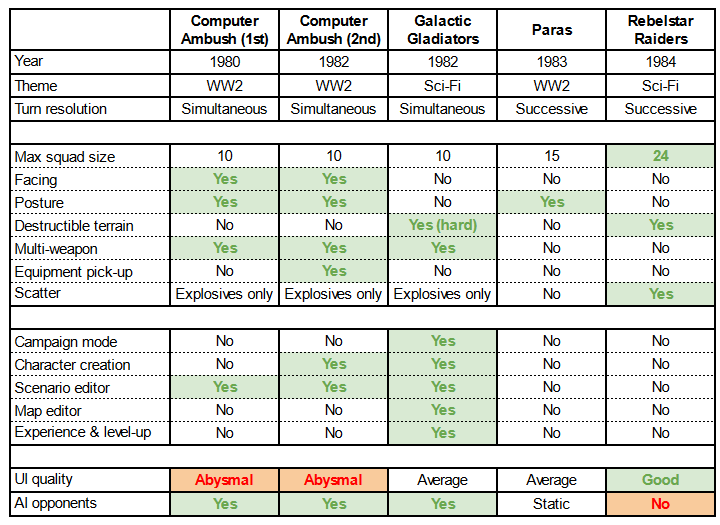
Reception
Rebelstar Raiders received a warm welcome from the gaming press, with ratings ranging from good to excellent. Home Computing Weekly reviews the game first in June 1984, rating the game 4 stars (so less than The Fall of Rome, which granted was published by the same company as Home Computing Weekly). The review includes a weird comment (“cheaters get double-turns by entering the ‘end-turn’ code twice“, my suggestion is to play with someone else) but otherwise writes: “good graphics and very absorbing“.
Rebelstar Raiders also received massively positive coverage by Crash. The first one came in October 1984, when Angus Ryall wrote an anthology of wargames on Spectrum. Ryall has few good things to say about wargames on Spectrum: “Most of these games have abominable graphics, laughable point systems and unintelligible instructions. They tend to be long-winded and very slow, and one or two are just plain idiotic.” Still, “a couple here were actually enjoyable to play“. The first one is Apocalypse, but “even better than Apocalypse is Rebelstar Raiders”, described as “a great mix of strategic thinking and general blasting power”. Two years later in May 1986, Crash returns to Rebelstar Raiders, stating “Red Shift no longer exists […] Anybody with a copy of the game should treasure it – the game has its faults, but it was (and still is) way ahead of its time.“
Finally, I feel I should mention the coverage by ZX Computing in April 1985. Rebelstar Raiders is “another excellent strategy program from the Red Shift guys” and “a compulsory addition to any strategy fan’s tape library” though the reviewer also complains that “sometimes you can miss an opponent and kill one of your own men”. I call that a feature.
Rebelstar Raiders’ popularity was real, as is proved by the many letters to the editor mentioning the game, often to inquire about the non-existing scenario disk. In December 1988, someone even proposed their own scenarios and a utility to make them:
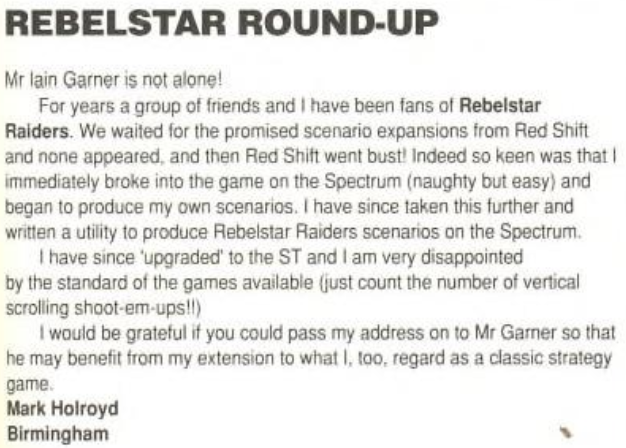
The game and its sequels are still remembered fondly as cult classics, though the love of the community seems more focused on the sequel Rebelstar than on Raiders, as evidenced by instance by the upcoming release on Steam of Archrebel Tactics, “a strategy game heavily inspired by Julian Gollop’s Rebelstar”
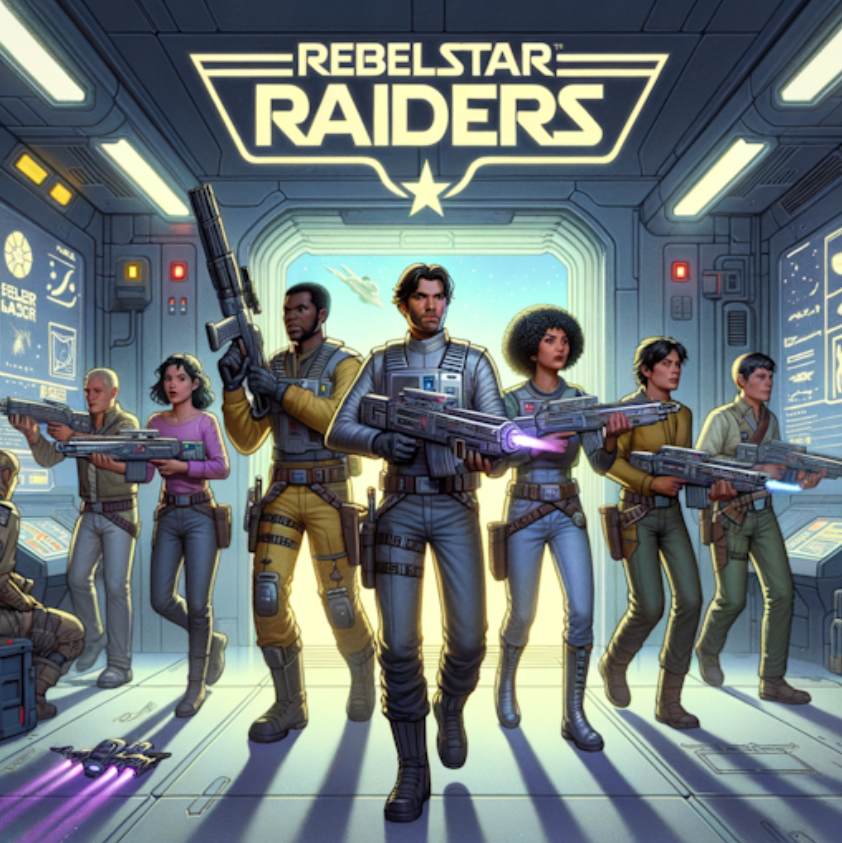
There are still a lot of years to go before Gollop’s XCOM. I won’t have to wait too long for his next effort, though – Rebelstar was released in 1986, and you can bet I will play it both multiplayer and single player!
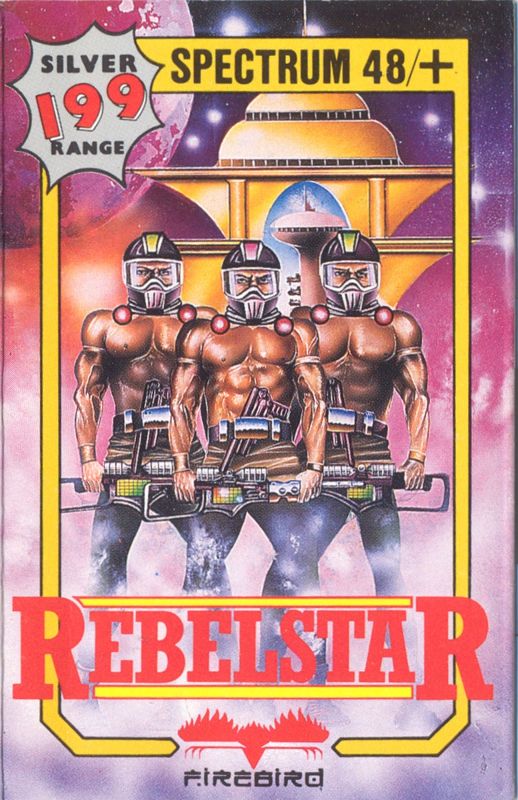
14 Comments
It took a while between the CRPG Addict and you, but finally we managed to see a ZX Spectrum game with a good rating! Thanks, as always, for the great writing and the historical research!
Speaking of the rating, you left a “Two stars” at point F. of your breakdown. A mistake or this was supposed to reflect your initial assessment, which got updated at the end of the paragraph?
Good catch on the rating. Yes, it stems from my issues with rating it ‘in comparison’ to Galactic Gladiators, which was undeservedly rated at two stars, so I went back and forth between 2 & 3 stars until I solved the issue by re-rating GG. Fixed
I quite liked The Fall of Rome and Pacific War, too.
Oh yes, I see I left a comment on the good rating of Pacific War, when you published it. I guess my conversation topics,as well as my memory, are limited 🙂
I know I am horribly pedantic, but I noticed that now “Starbase Hyperion” and “Space Station Zulu” appear twice in your global ranking (at positions 11-12 and 14-15). Feel free to delete this comment after you fix that.
Ah! Some other victims of the Great Re-Rating of the area between the 10th and the 15th ranks. I updated, pushing RR up by another rank.
I don’t know how the cRPGAddict did to remain consistant across 10 years. I want to re-order the whole list every other day!
I see I even commented on your Pacific War comment 🙂
I played RebelStart in 1986 (or 87) on AmstradCPC, and it was the start of my love affair with Gollop’ games.
I even drawn maps on paper graph, then hex-edited the game files to “import” my designs…
The Return of the King!
That’s both you and Julian Gollop. Cracking review of an interesting game. Looking forward to see what Mr Gollop does next!
I’ll admit I never played older Gollop games (and I mean, pre X-com) but until now his output was kind of mediocre to atrocious (Nebula will always be a mark of dishonour). My contrarian self feels the need to point out that Galactic Gladiators performed awesomely as a play-by-forum game where Rebelstar died an ignominious death (because our scenario designer for GG was the Scribe and not Gollop, for certain!).
Nonetheless, it must be the beginning of rising quality, and by the Gods Chaos is indeed fun, even if it’s an adaptation.
Even if I got sniped on turn 2.
I rather like Nebula 🙂 I’d be proud of it if 16 year old me wrote it.
I’m surprised that Rebelstar Raiders got so much acclaim at the time. I only noted it when it was mentioned in Crash a couple of years later in a retrospective article, and then got really excited when I found Rebelstar on the shelf in the local game shop, and the screen shots looked just like RR (As indeed there was a reason for that).
You will most likely face many struggles in the future about rating games whose single-player and multi-player experiences differ drastically.
Rebelstar Raiders already had many of the building blocks in place and Chaos is showing that Gollop was starting to learn about the concept of balance also. This has created enough interest in me that I will try out the sequel too at some point.
Having not played it, but having seen both the forum game and your fights against Ahab, it is clear that what the game lacks in both AI and balancing it more than makes up for in feeling like a solid building block for what’s to come. I dunno if Laser Squad is the next game in his tactical titles precisely, but they definitely feel like logical increments.
Also, that cover for Rebelstar doesn’t look like its for a strategy game, it looks like its for a decidedly different audience. Though like the game Bastard Bonds, not necessarily a completely different one.
I’ve made a new scenario for Rebelstar called Rebelstar Revengers.
This is a pre-release version, as I was hoping to get feedback on the difficulty level and if it needs balancing.
“The first Rebelstar assault on Moonbase Delta was a disaster and some of the Raiders were captured by the Operatives with the other Raiders barely making it back alive.
The Operatives have taken the opportunity to strengthen their defences. The Laser Defence Computers have been moved to a more secure location and the ISAAC computer now has 4 data cores with extra protection.
The Sentry Droids have been replaced by Guard Droids with better weapon skills and armed with Auto Rifles.
They have also built a prison room to house the captured Raiders who have course been stripped of their weapons.
Now it’s time for the Raiders to return, rescue the prisoners, finish the mission and gain revenge.”
We’ll see if some of our Spectrum fans are interested. As for me Ahab & me, we haven’t reach the non-Raiders Rebelstar, so the balancing check won’t be coming from us :).
Would love to try this out. Loved the original Rebelstar II, just so playable. A new map/mission would be ideal
No worries.
I would have liked to see the Rebelstar Raiders editor that Mark mentioned in the letter to Edge magazine.
I wonder how easy it would be to do the Rebelstar Raiders scenarios in the Rebelstar Engine?